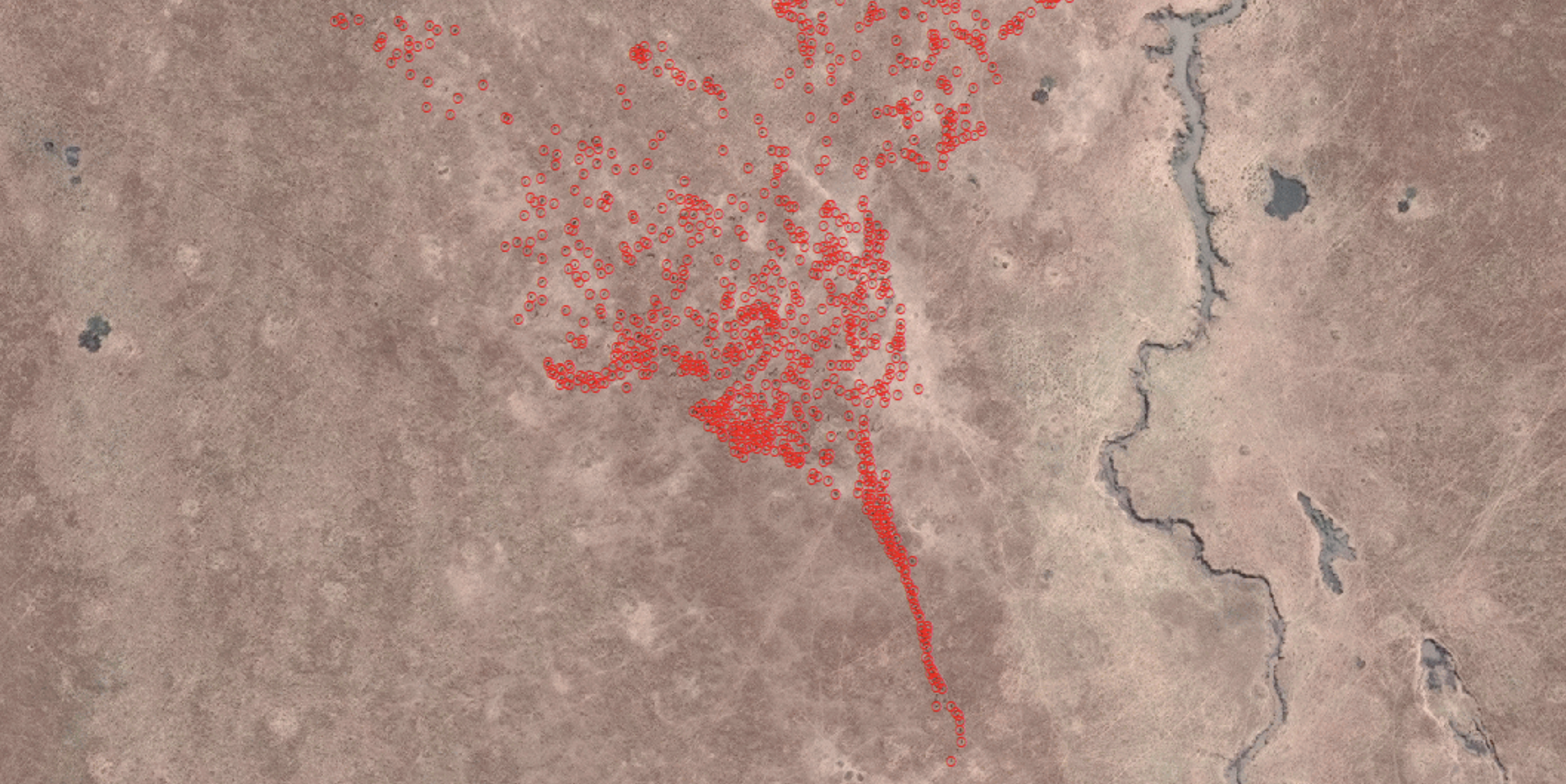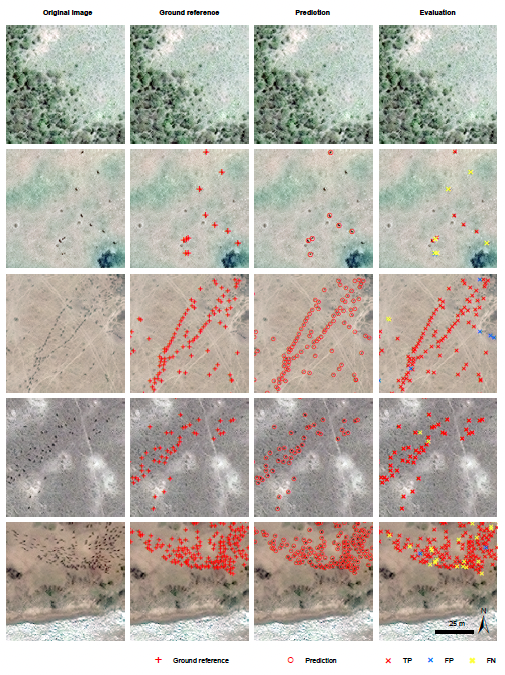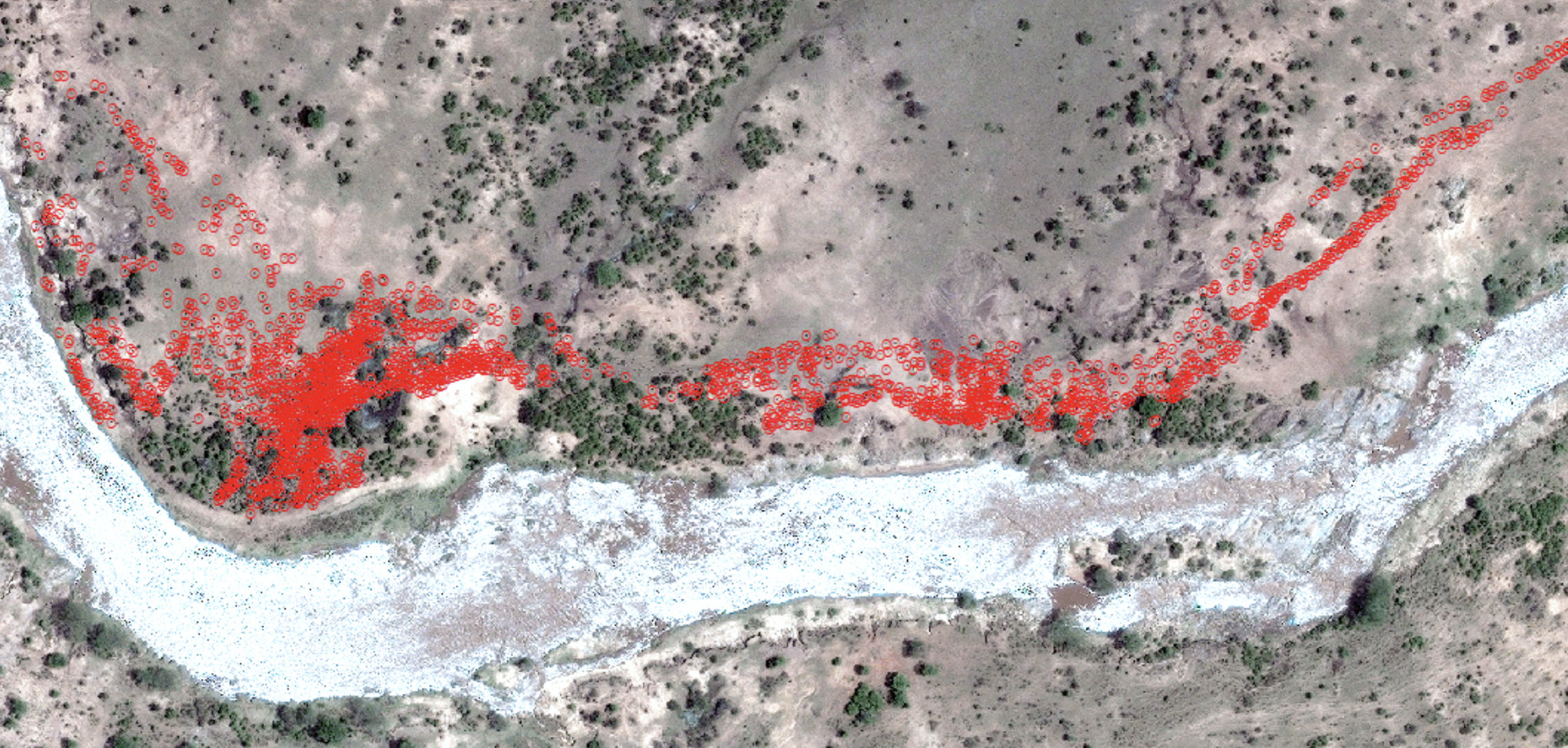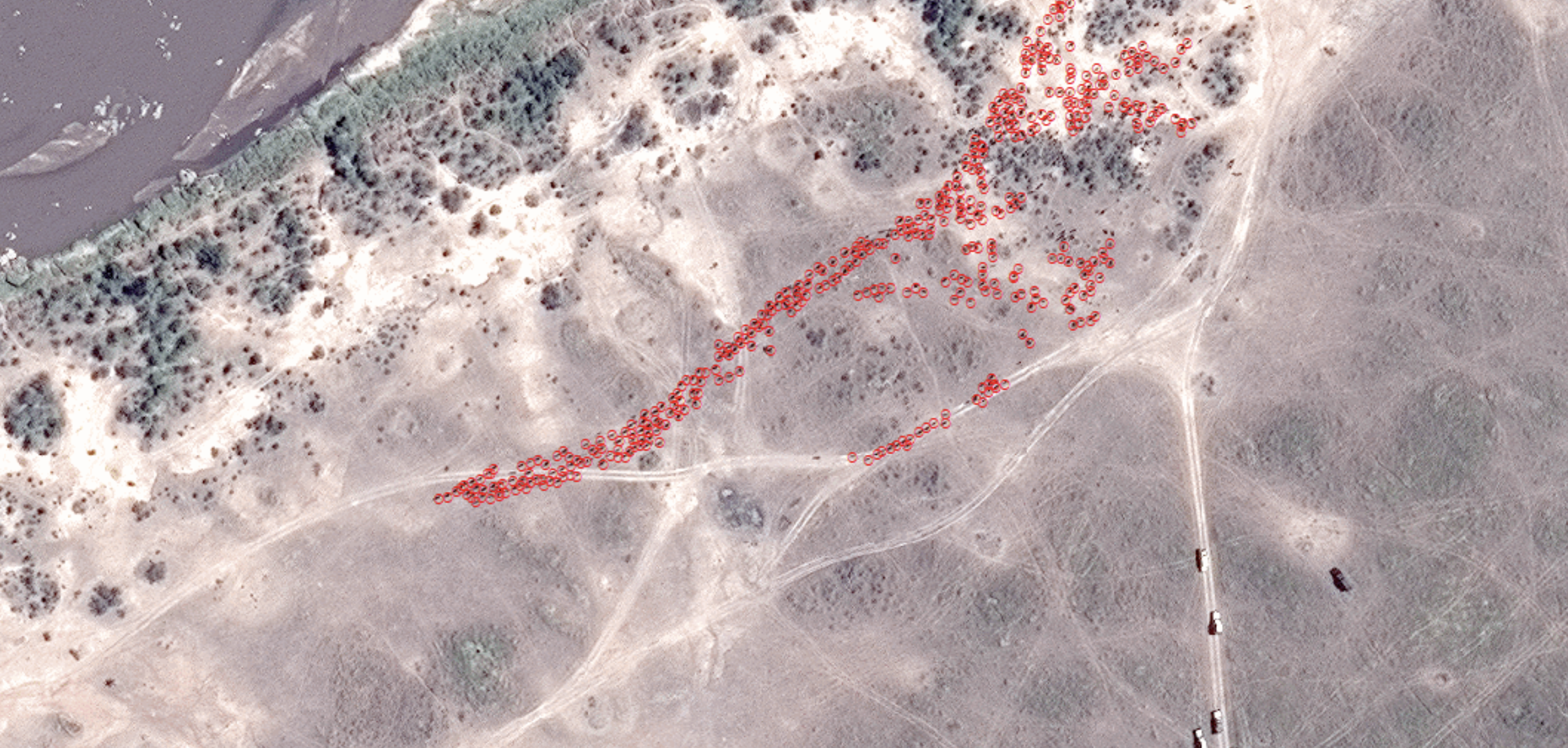News
WildCRU Alumna Isla Duporge tracks the largest migration on the planet from satellite using deep learning
The Great Wildebeest Migration is the most extensive land-based mammal migration known to our planet, playing a pivotal role in driving numerous ecological processes that sustain the well-being of both humans and wildlife in the region. Unfortunately, this remarkable natural phenomenon faces challenges brought about by climate change and alterations in land cover and land use. Hence, the urgent need arises to develop precise and cost-effective monitoring methods to safeguard the wildebeest population and the Masa Mara ecosystem at large.
In response to this pressing issue, a recent study (https://www.nature.com/articles/s41467-023-38901-y) conducted by WildCRU Alumna, Dr. Isla Duporge, with three other first lead authors, has made a ground-breaking revelation. The study showcases, for the first time, the remarkable potential of satellite remote sensing and machine learning techniques to estimate the populations of wildebeest and zebras automatically and accurately across the diverse and ever-changing landscape they traverse during their migration. The results achieve accurate detection of nearly 500,000 individuals across thousands of square kilometers and multiple habitat types, with an overall F1-score of 84.75% (Precision: 87.85%, Recall: 81.86%). These efficiencies promise to reveal novel ecological insights at spatial scales which are germane to the management of populations and entire ecosystems.
Cutting-edge advancements in satellite remote sensing and machine learning present unparalleled opportunities for monitoring biodiversity on a global scale, revolutionizing the field with their remarkable speed and precision. This work is a direct development of the research Isla undertook during her DPhil at WildCRU where she monitored elephants from satellite using deep learning with Professor David Macdonald.
The outcomes of this study have yielded exceptionally precise findings, accompanied by the largest training dataset ever published in a satellite-based wildlife survey, comprising an impressive 53,906 annotations. In addition to offering an openly accessible and adaptable method for conducting satellite-based wildlife surveys, the approach holds immense potential for spatial scalability, paving the way for generating comprehensive and unprecedented total counts of migratory ungulates within open landscapes.









